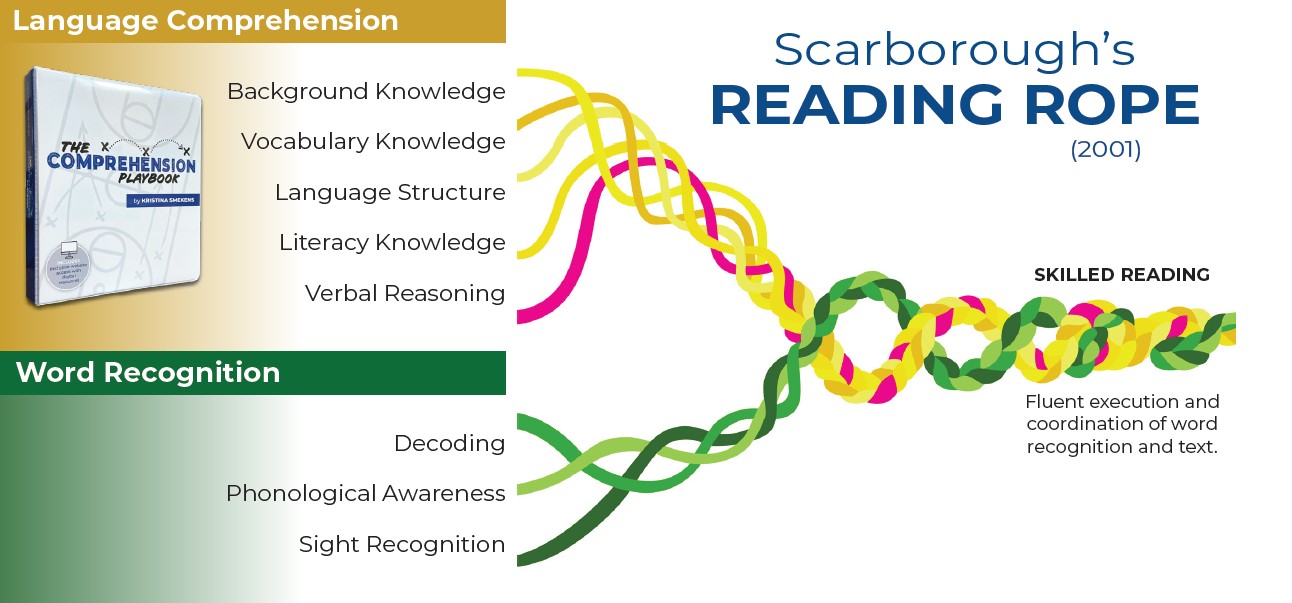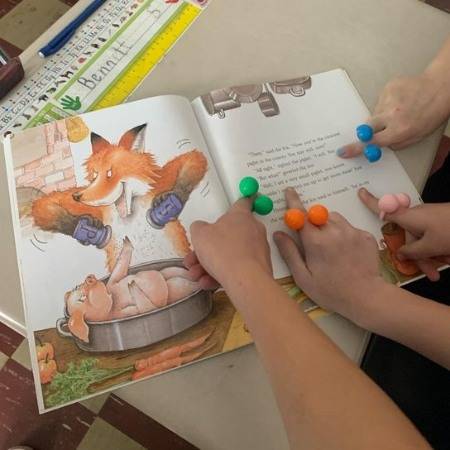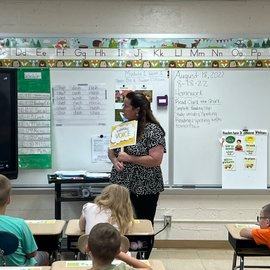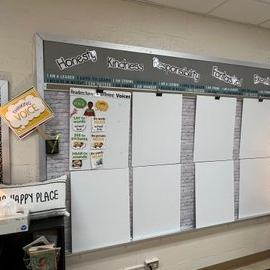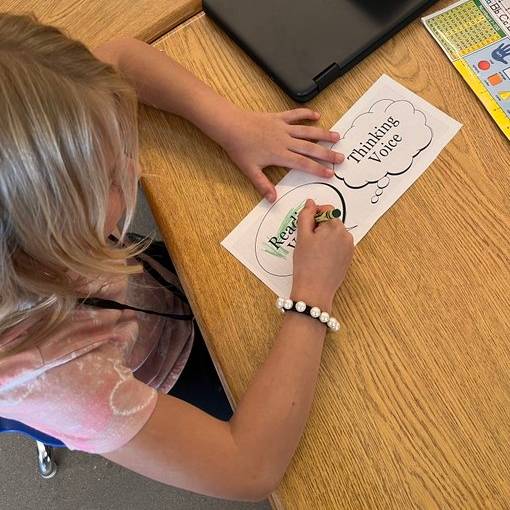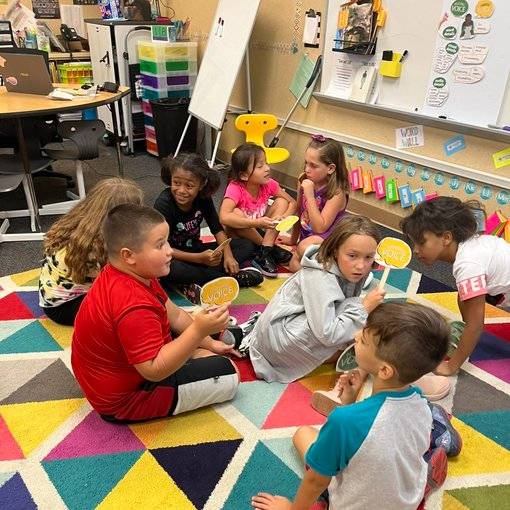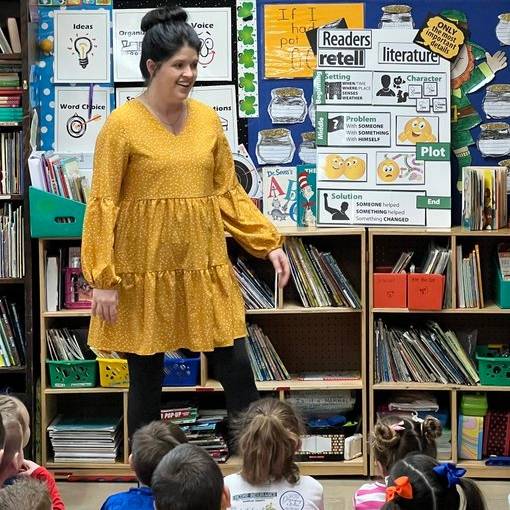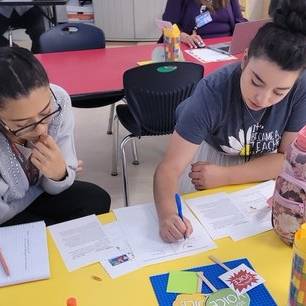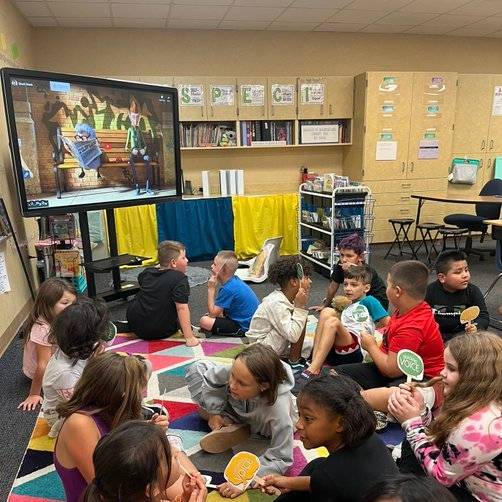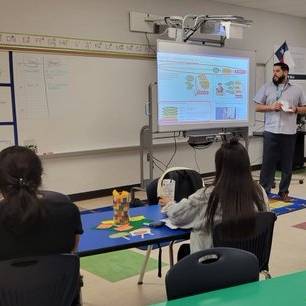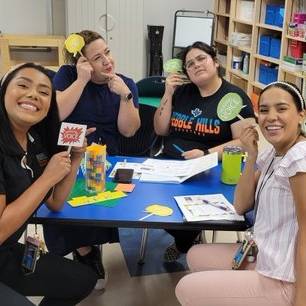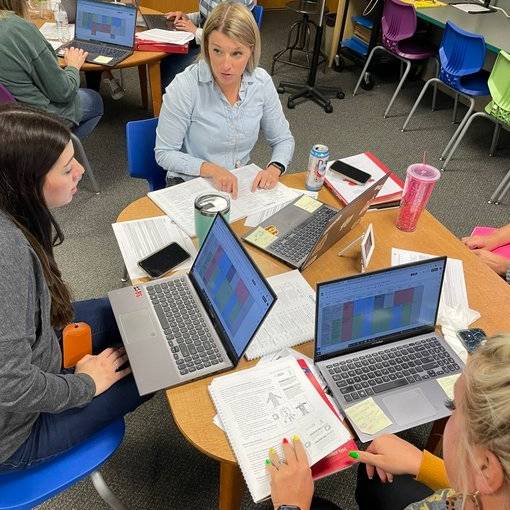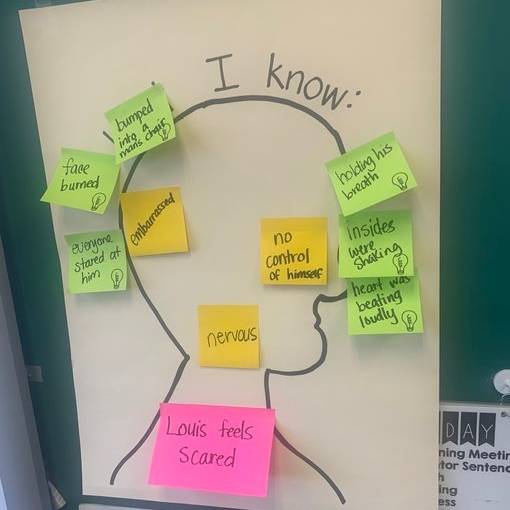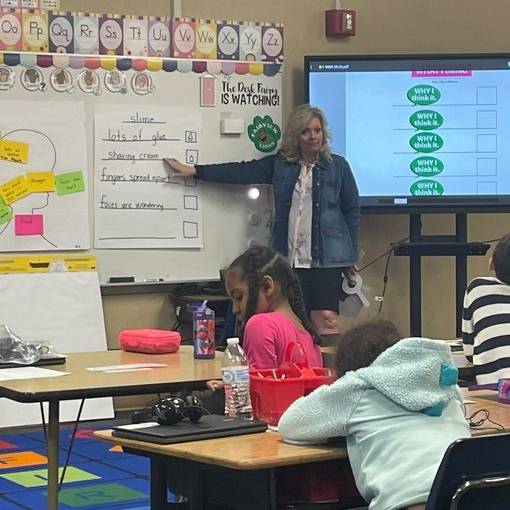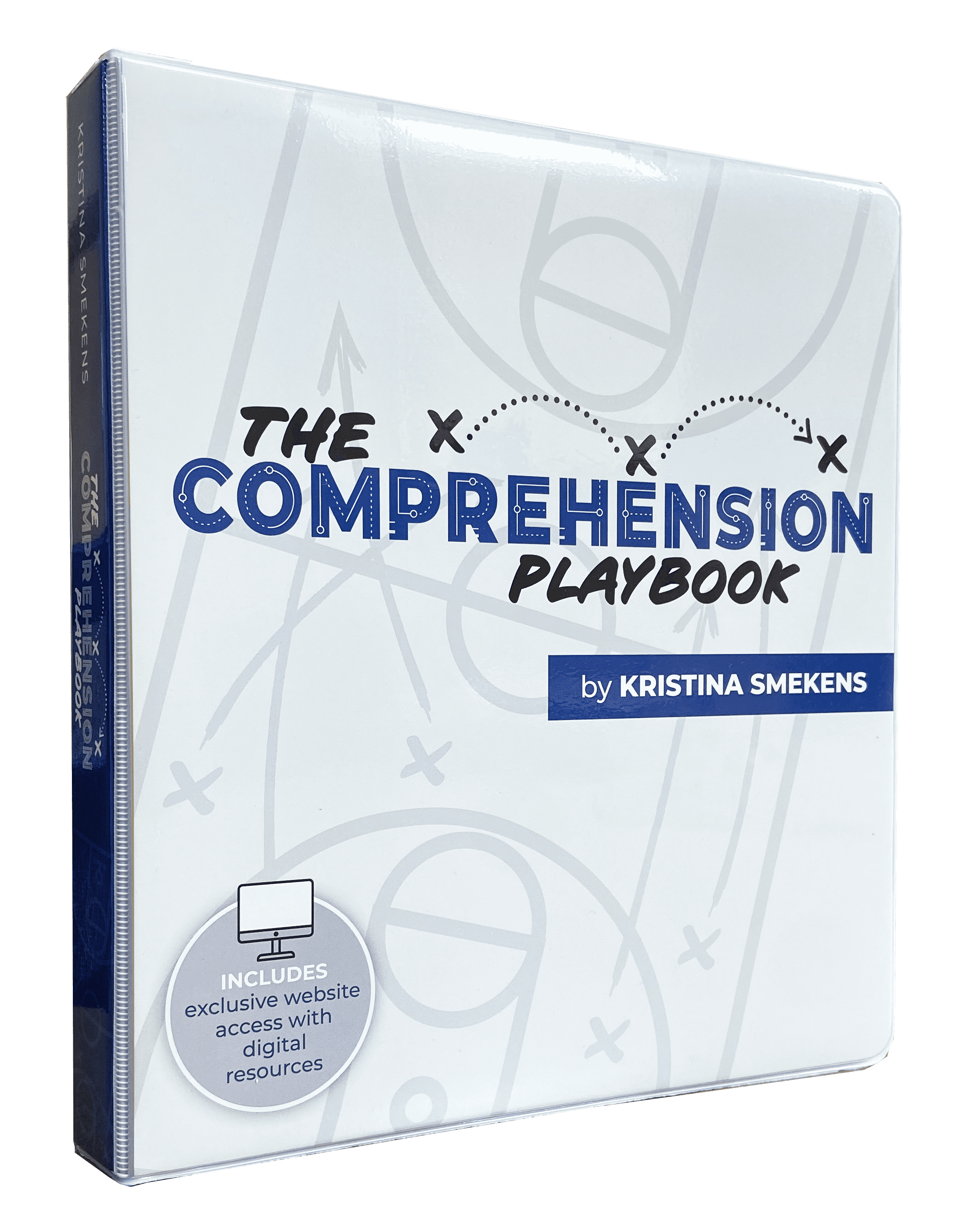
Reading Comprehension Lessons to Build Better Readers
- Deliver engaging, whole-class instruction that gets results.
- Equip readers with the skills to tackle any text.
- Empower classrooms to help students read confidently
- Help students prepare for standardized tests.

Why You Need a Playbook
Just as an athletic coach operates from a tried-and-true book of plays, teachers need their own playbook for developing readers who can comprehend text independently.
This reading comprehension book provides what teachers have long requested — an explicit, yearlong scaffold of mini-lessons to teach the comprehension skills required by today’s rigorous standards.
The compilation of “plays” included in The Comprehension Playbook teaches students to:
Ask & answer questions.
Compare texts and experiences.
Our strategies to teach reading comprehension are available for Grades K, 1, 2, 3, 4, 5, 6, & 7-12 as well as bundles for Grades K-5 and K-12.
How The Comprehension Playbook
supports the science of reading
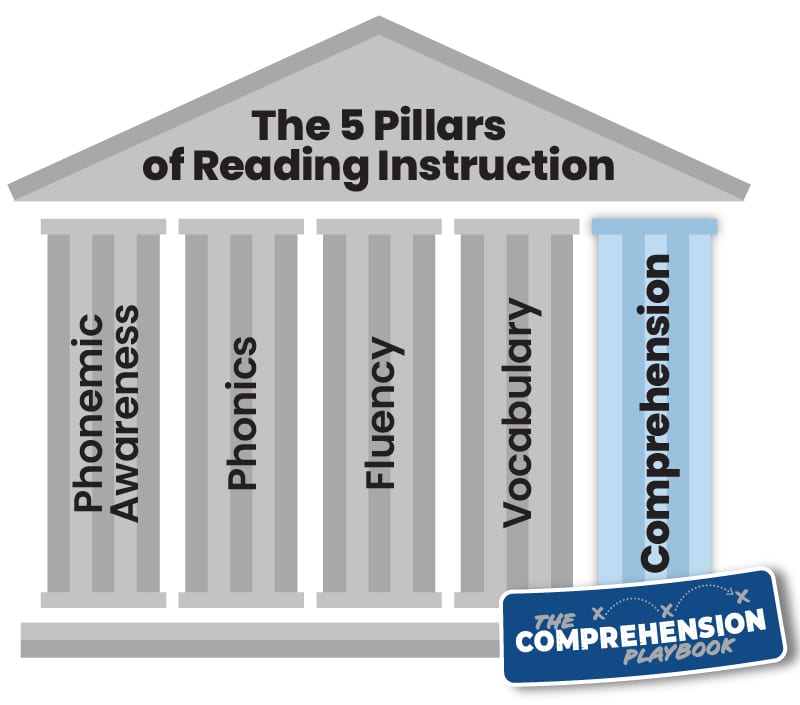
Educational research surrounding the science of reading has heightened the need for teaching phonics and specifically decoding. But, as we know from the research conducted by the National Reading Panel, effective reading instruction requires a combination of direct, explicit teaching of all five pillars of literacy: phonological awareness, phonics, fluency, vocabulary, and comprehension.
While each of these components is important and necessary, The Comprehension Playbook focuses specifically on the pillar of reading comprehension.
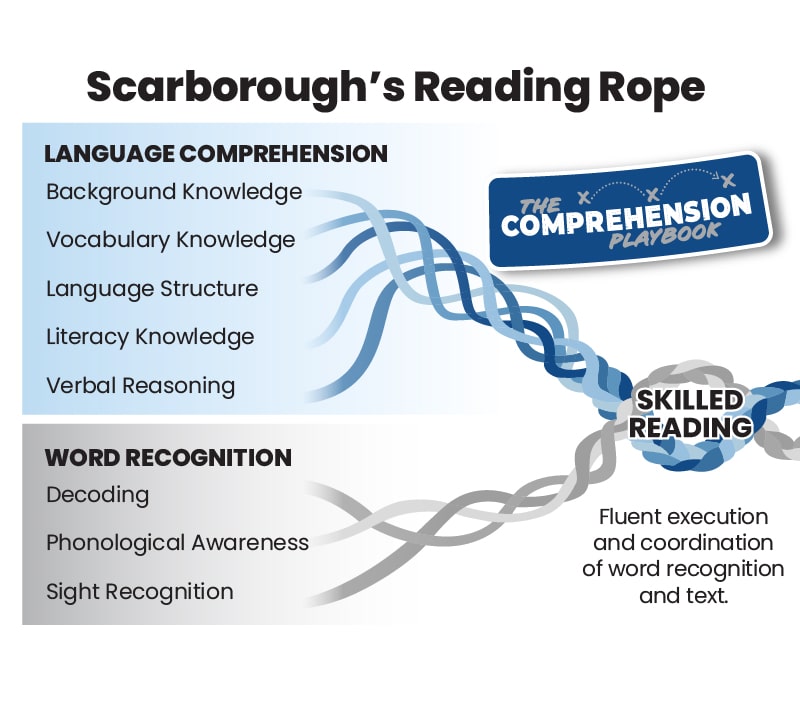
Dr. Hollis Scarborough’s iconic Reading Rope reveals the essential strands for reading development. While many science of reading initiatives target the Word Recognition strand of Scarborough’s Reading Rope, The Comprehension Playbook addresses the Language Comprehension strand.
As important as it is that students learn how to decode words, they must simultaneously learn how to think about the words they are reading. This requires whole-class, teacher-led instruction on comprehension skills and strategies—and this is the focus of The Comprehension Playbook.

According to the Simple View of Reading formula, both word recognition and language comprehension are necessary to create a proficient reader.
The Simple View of Reading provides an argument for teaching decoding and phonics with intentionality. Likewise, direct instruction on teaching language comprehension is imperative as well.
Consequently, K-12 educators need to have whole-class lessons that target grade-level comprehension instruction—and this is the focus of The Comprehension Playbook.
Key Features
FREE SAMPLES
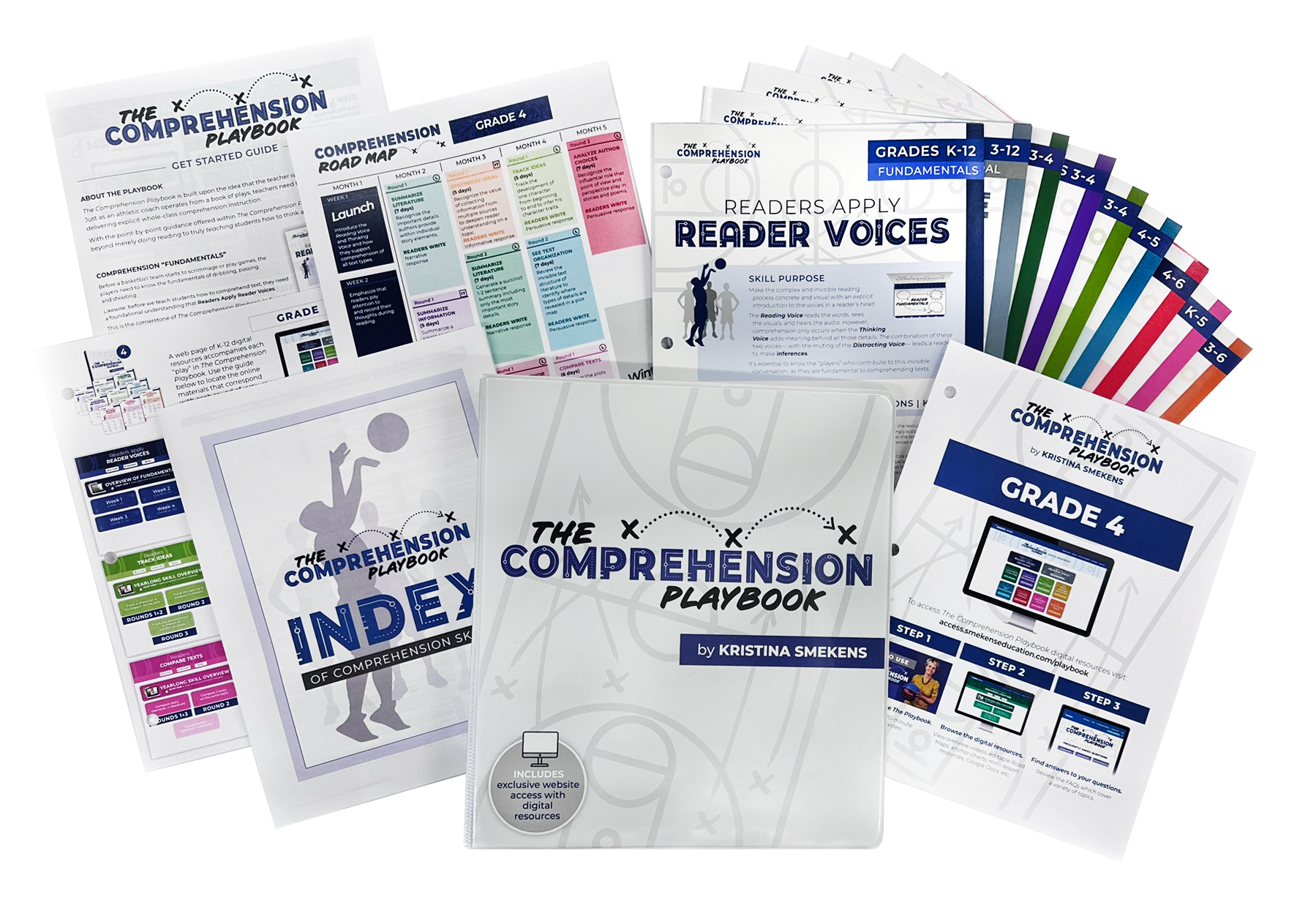
Preview a comprehension “play”
Purchase The Comprehension Playbook to receive:
A list of the College and Career-Ready Standards that support the skill
A vision for spiraling and layering instruction throughout the year
A detailed description of explicit points to make per instructional round
A suggested full-color anchor chart to build and grow throughout the year
Text considerations that support each lesson series
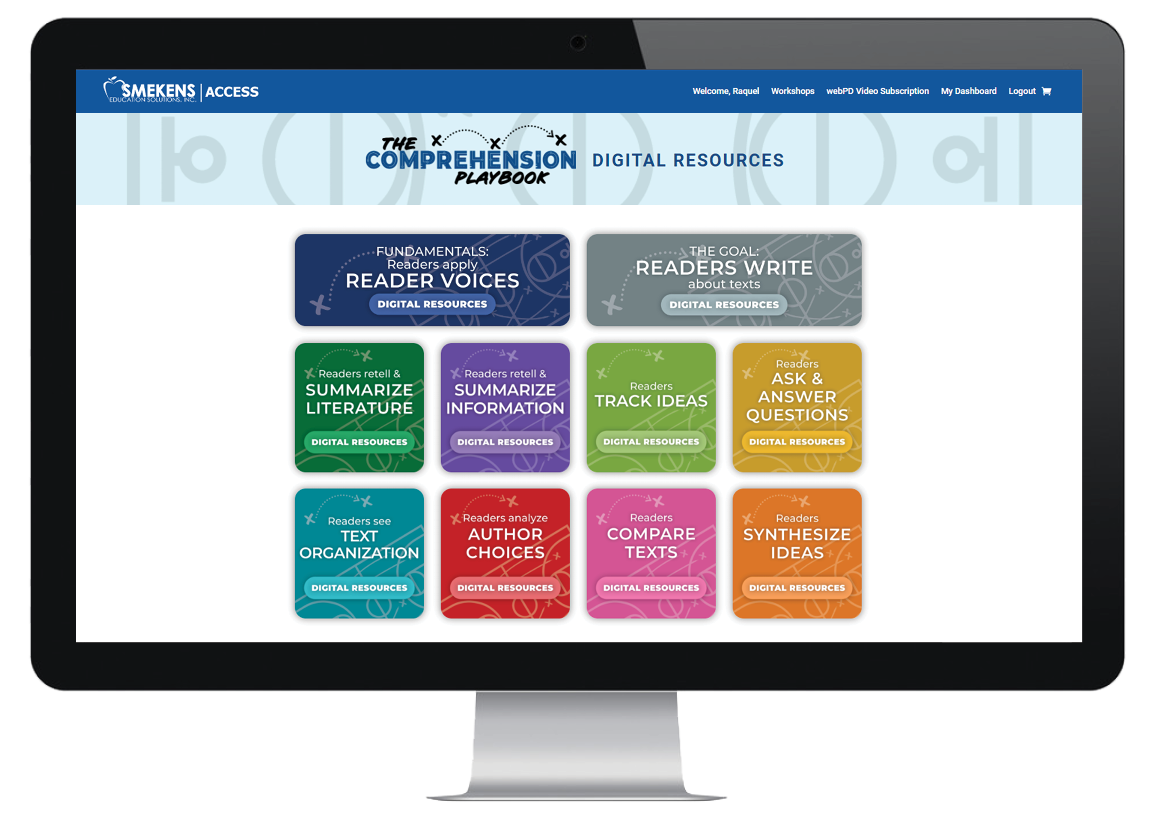
Preview the digital resources
Purchase The Comprehension Playbook to receive:
Resources to help you implement each comprehension “play”
Customizable road maps for teaching reading comprehension skills
Ready-to-use Google Docs, PDFs, JPEGs, and more
WHAT EDUCATORS ARE SAYING
Educators who have used The Playbook have appreciated its clear and easy-to-use approach. Hear directly from them about how our K-12 reading comprehension Playbook has led to improved reading comprehension with their students:
“We purchased a Comprehension Playbook for all of our elementary teachers K-6 and all of our Language Arts teachers 7-12, for the whole district.”
Tara White, Director of Literacy
Allison McCormick, Third Grade Teacher
“The Playbook allows us to come back to these skills multiple times a year to develop over time…explicit instruction of those foundational important skills.”
“The Playbook has provided a structured framework for my classroom that allows me to teach my readers HOW TO read at a deeper level.”
Antwerp Elementary School – Antwerp, OH
“The Playbook has helped me break down large and difficult standards into target skills that help students reach the final expectation the standard requires.”
Riverview Elementary School – Elkhart, IN
Elbert County Middle School – Elberton, GA
“The Playbook provides lessons that go deeper with the reading concepts than I would have done without it.”
Mt. Zion Junior High School – Mt. Zion, IL
“The Playbook has deepened my understanding of how to teach and how to break apart the steps in the process.”
St. Charles Borromeo School – Fort Wayne, IN
“My students have a deeper understand of the skills and the depth of knowledge of their response to text questions is deeper.”
Bixby West Intermediate – Bixby, OK
Frequently Asked Questions
BUY THE PLAYBOOK
Your classroom is sure to benefit from our practical strategies for teaching reading comprehension. Purchase The Playbook and help your students on the road to confident reading comprehension!
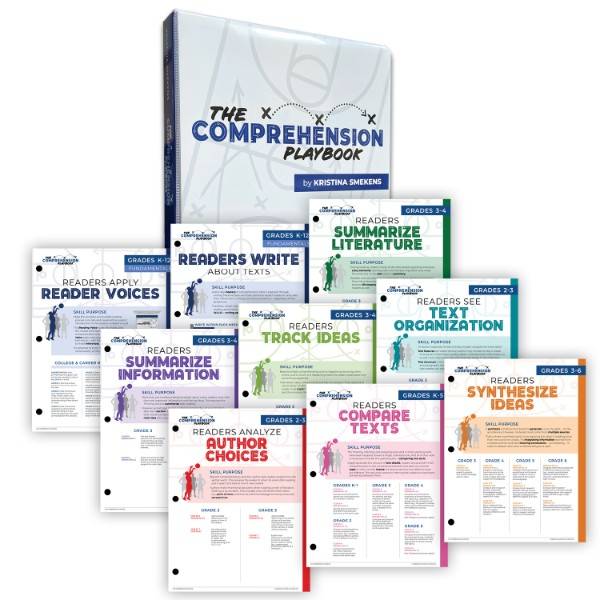
Grade Level
$89.99
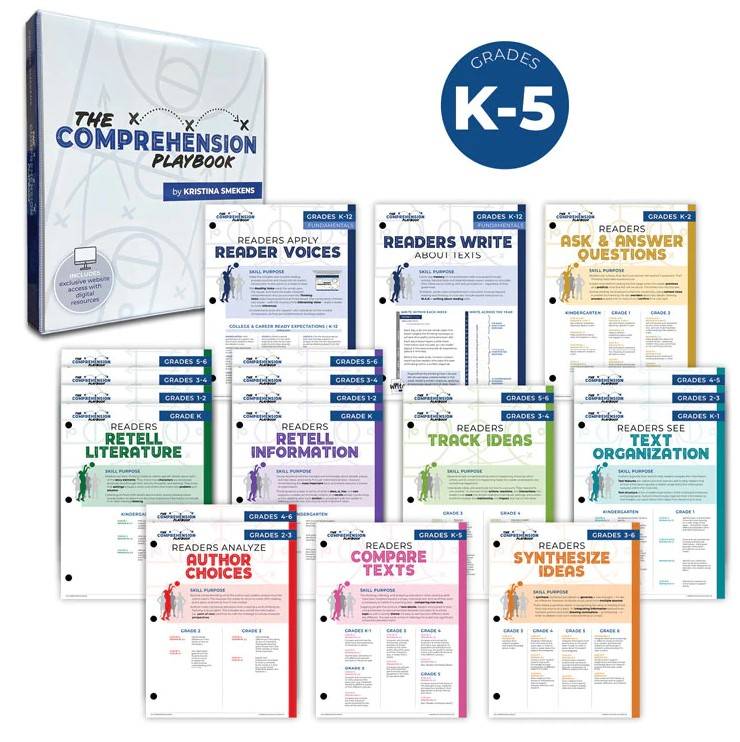
Bundle
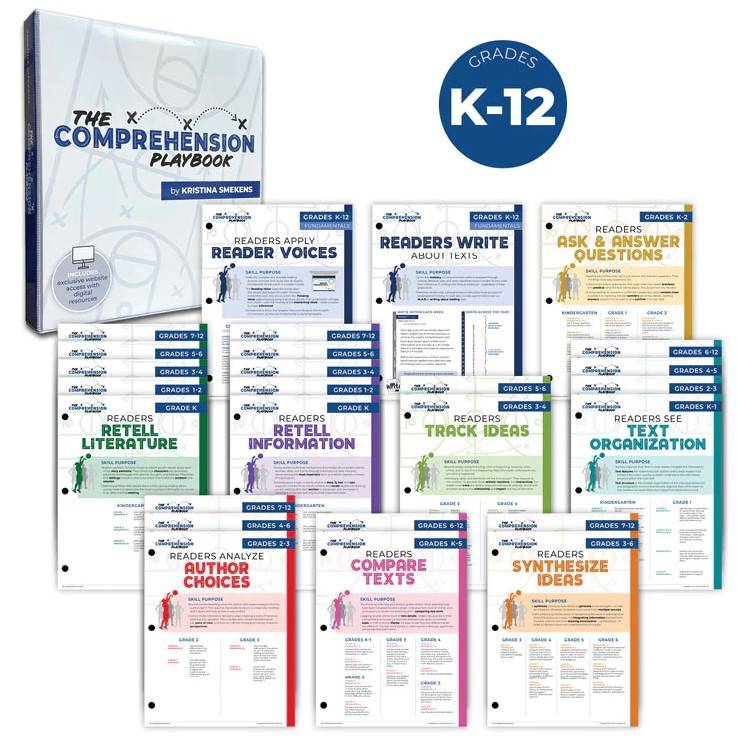
Bundle
If you are still unsure if The Comprehension Playbook is right for you, reach out to us. We will be happy to chat about your situation and discern if The Comprehension Playbook is the right fit as a supplement for your reading comprehension curriculum.
Complete the form below or call (888) 376-0448.

